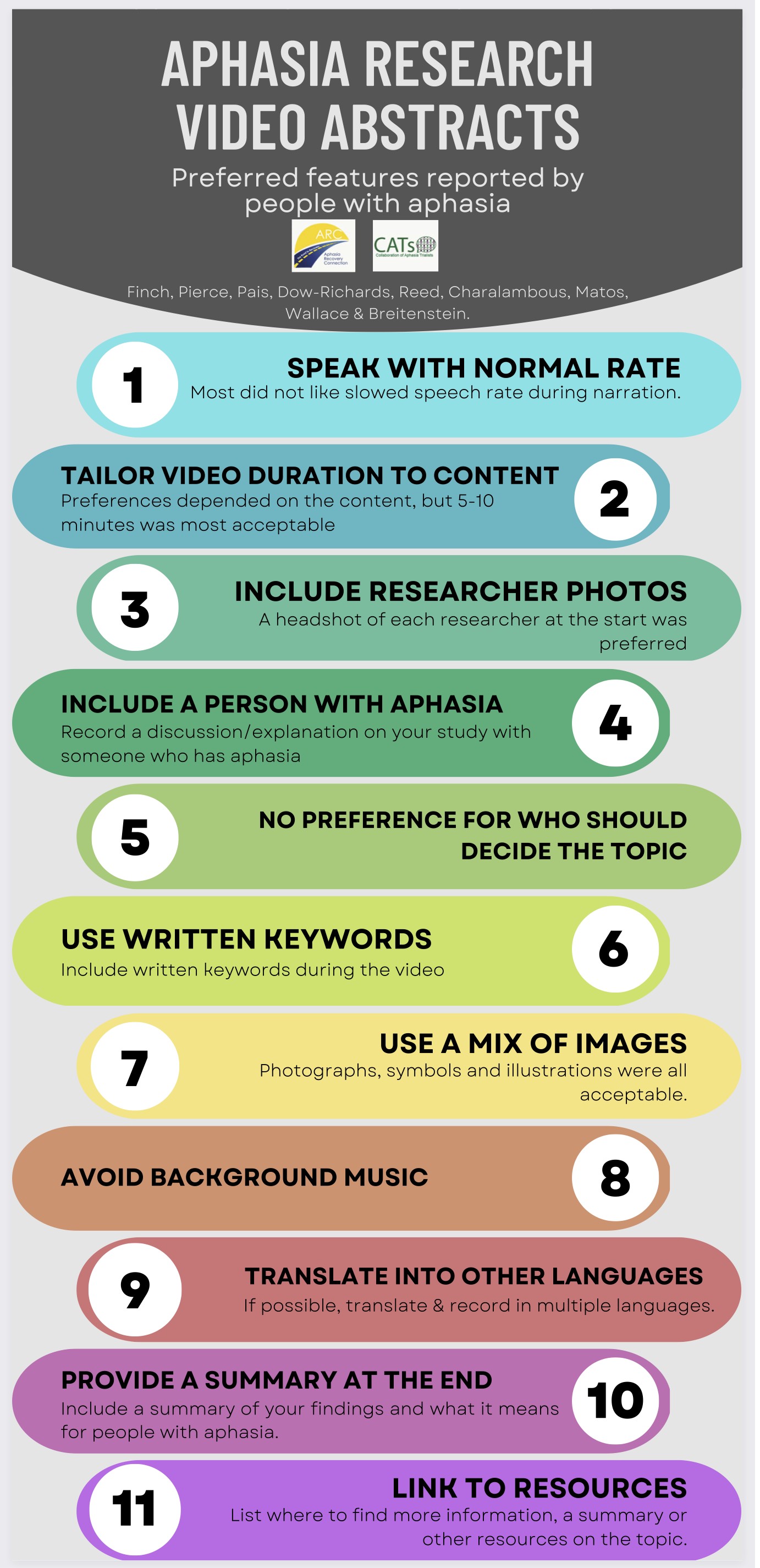Most published aphasia research is not easily accessible for people with aphasia. Video is an ideal format for disseminating information to people with aphasia, but no research has explored the preferred format for aphasia research videos. We explored preferences of those with aphasia in three stages, all utilizing focus groups. In the first stage, 16 people with aphasia helped develop a guide for our second focus group. Next, 40 people with aphasia participated in voting based on these questions. In the final stage, we engaged 6 people with aphasia to review the voting results and provide feedback on a sample video that was created according to the preferences identified earlier.

These preferences provide guidance to researchers in producing videos on aphasia research, thereby bridging the gap between evidence and knowledge within the aphasia community. We also recognize the need for further research, including the views of non-English speaking participants and family members of people with aphasia.